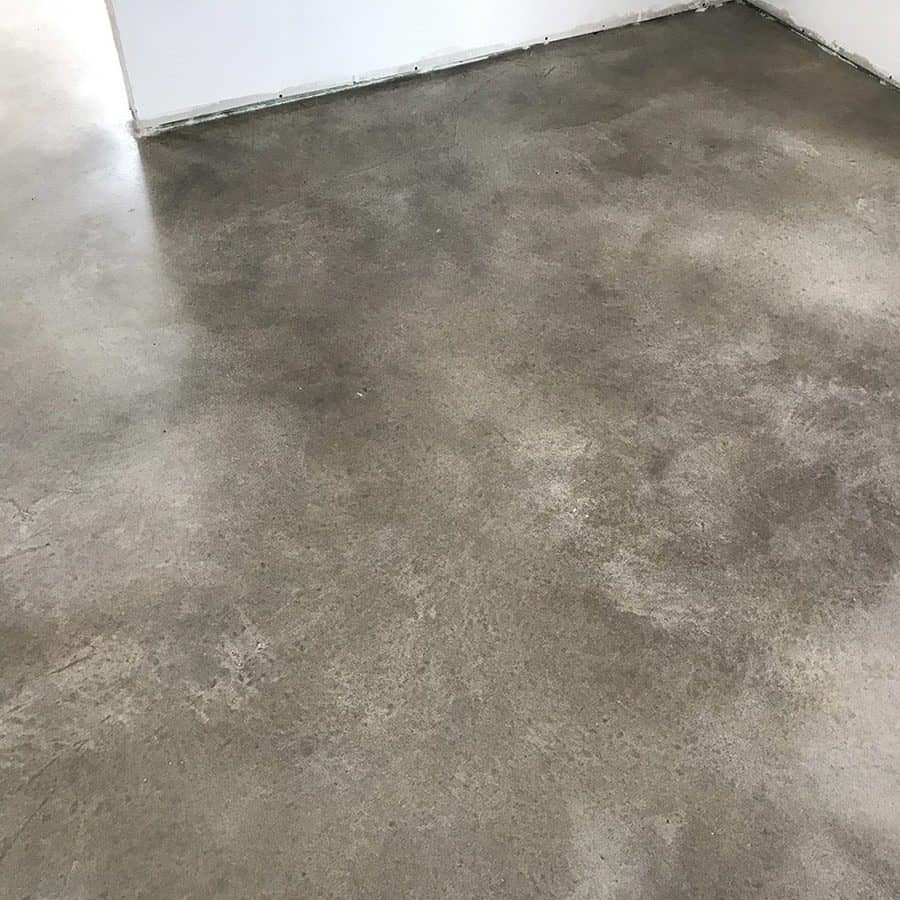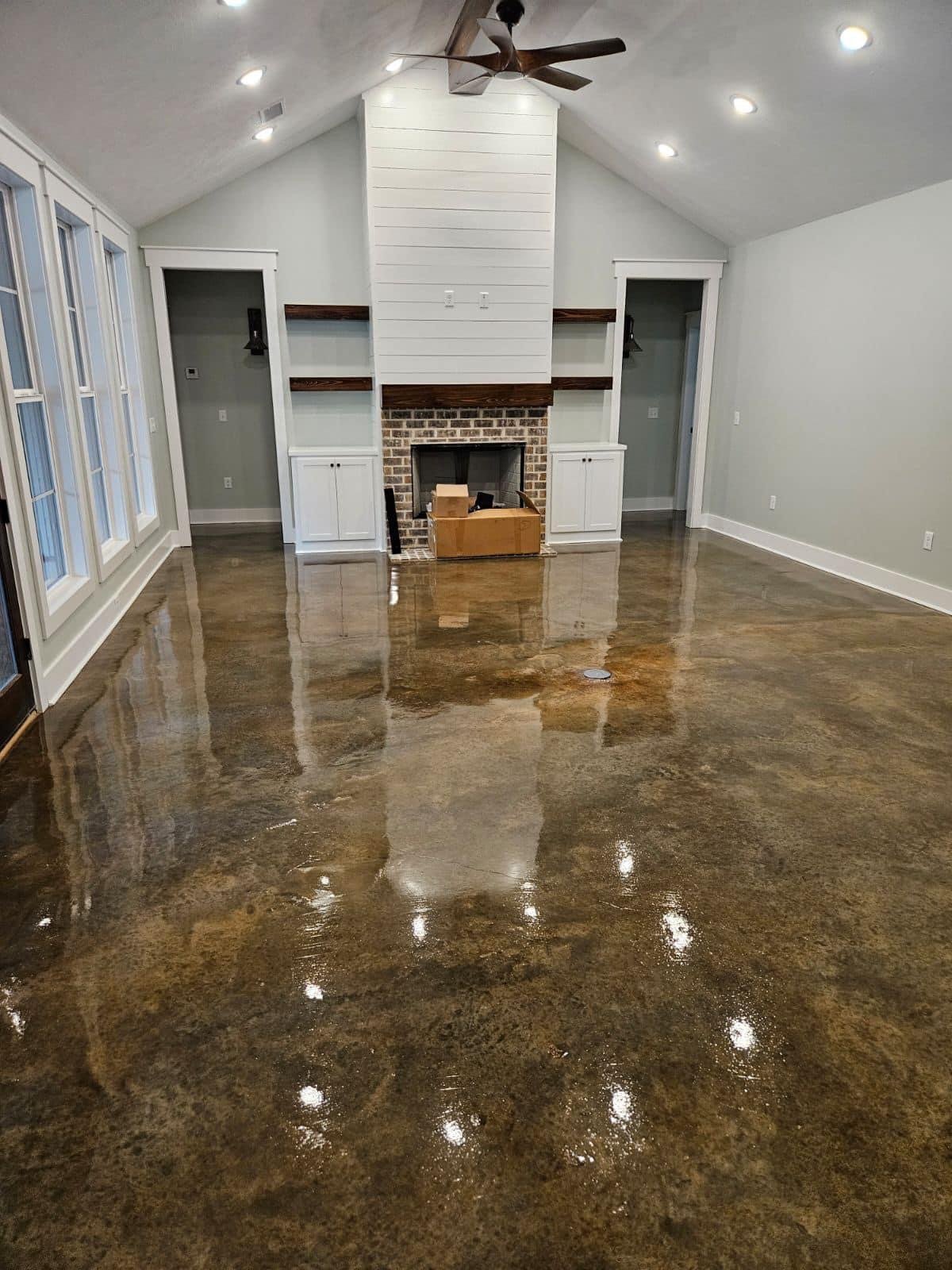5-Step Process to Hiring the Right Local Stained Concrete Contractors in Austin
5-Step Process to Hiring the Right Local Stained Concrete Contractors in Austin
Blog Article
The Ultimate Overview to Choosing Stained Concrete With Quality Concrete Solutions
When it comes to improving your space, stained concrete could be the ideal service. From choosing the ideal hues to comprehending various types of discolorations, there's much to explore.
Recognizing Discolored Concrete: What It Is and Exactly How It Functions

After the tarnish collections, a sealer is added to protect the surface and enhance the shine. With many color options and surfaces, discolored concrete can transform any kind of location right into a sensational focal point.
The Benefits of Deciding On Stained Concrete for Your Home
When you consider floor covering options for your home, stained concrete stand apart for its mix of visual charm and functionality. One significant benefit is its toughness; stained concrete can stand up to hefty foot website traffic, making it suitable for both interior and outdoor spaces. You won't need to fret about scrapes or damages like you could with wood or laminate flooring.
An additional benefit is its low upkeep. Unlike carpet or floor tile, stained concrete needs very little upkeep-- simply occasional sweeping and mopping. This not only conserves you time but also keeps your home looking wonderful year-round.
Discolored concrete is additionally eco-friendly, as it typically uses existing concrete slabs, minimizing the need for new materials. With its resistance to wetness and irritants, it produces a healthier living setting too. Generally, choosing tarnished concrete ways enjoying a fashionable, long lasting, and easy-to-maintain flooring service for your home.
Exploring Color Options: Finding the Perfect Hue
When it comes to tarnished concrete, picking the appropriate color can transform your room. You'll discover preferred stain colors, yet don't wait to explore personalized shade blending to match your vision. Checking shade examples is vital, so you can see exactly how various tones will certainly search in your home.
Popular Spot Colors
Selecting the right discolor color can change your concrete area, enhancing its aesthetic appeal and making it distinctively yours. Popular tarnish colors use a variety of options, each giving a distinct ambiance. Earthy tones like terracotta and brown develop a warm, inviting ambience, while great tones like blue and eco-friendly stimulate a soothing atmosphere. If you're going for a modern appearance, think about streamlined grays or charcoal, which can match contemporary design wonderfully. For a strong statement, crimsons or vibrant oranges can include power and enjoyment to any kind of location. As you check out these preferred shades, think of how they'll complement your furnishings and surroundings, ensuring your tarnished concrete genuinely mirrors your personal design.
Custom Shade Blending
If you intend to take your concrete project an action even more, custom shade blending opens up a world of possibilities. By combining various discolor colors, you can accomplish a distinct hue that perfectly enhances your space. Believe about the total aesthetic you're going for-- whether it's a cozy, earthy tone or a vibrant, attractive shade.
Team up with your concrete service supplier to explore different mixes that match your design. Custom mixing doesn't simply produce a conventional appearance; it adds character and depth to your concrete surface.
Examining Shade Examples
Various Kinds of Stains: Acid vs. Water-Based
When selecting in between acid and water-based stains, it's important to recognize their differences. Acid stains produce one-of-a-kind, variegated shades with a chain reaction with the concrete, while water-based spots offer a wider array of hues and less complicated application. local stained concrete contractors. Each type has its own benefits and techniques, so let's discover what works best for your project
Acid Spots Overview
While both acid stains and water-based stains supply distinct visual benefits for concrete surfaces, understanding their differences is important for making an informed selection. Acid stains react chemically with the minerals in the concrete, creating rich, variegated shades that can imitate natural rock. These spots permeate deeply, supplying sturdiness and resistance to fading. Nevertheless, they frequently need cautious application and a well-prepared surface to attain the very best outcomes. On the other hand, acid spots can be restricted in shade options and might not appropriate for all concrete types. If you're thinking about acid stains for your job, it is necessary to consider their special qualities against your particular requirements and preferences to assure you obtain the desired appearance for your concrete surface area.
Water-Based Stains Advantages
Water-based stains present an appealing you could try these out choice to acid discolorations, supplying their very own set of benefits for improving concrete surface areas. One major benefit is the wide variety of vibrant colors readily available, permitting you to attain the precise look you want. They're easier to apply and tidy up, making the process much more easy to use, specifically for DIY lovers. Furthermore, water-based discolorations have lower volatile natural substances (VOCs), making them a much safer option for indoor applications. These discolorations additionally provide an extra uniform look and can be made use of on a selection of surfaces past concrete, consisting of wood. With their fast drying out time, you won't need to wait long before enjoying your recently discolored surfaces. Choose water-based discolorations for a gorgeous, eco-friendly option!
Application Strategies Contrast
Picking the appropriate application method for discoloring concrete can considerably impact the outcome, so comprehending the differences in between acid and water-based discolorations is vital. Acid discolorations pass through deeply, responding with the minerals in the concrete to create rich, variegated shades. They're excellent for achieving a natural appearance however can be complicated to apply and need careful preparation.
On the other hand, water-based discolorations use a wider shade palette and are easier to apply. They may not supply the exact same deepness of shade as acid discolorations.
End Up Types: Matte, Satin, and Gloss Explained
When choosing a finish for your discolored concrete, comprehending the differences in between matte, satin, and gloss can significantly impact the overall appearance and feel of your space. Gloss coatings, on the other hand, produce a glossy, vivid surface that boosts color depth and radiance. Consider the atmosphere you desire to create and how each surface style lines up with your style vision prior to making your last decision.
The Relevance of Top Quality Concrete Solutions
Quality concrete services are important for attaining the best cause your tarnished concrete task, as they directly affect the toughness and look of your completed surface area. When you pick experienced specialists, you assure that the blending, putting, and ending up procedures are performed with accuracy. This interest to information lessens the threat of splits, stains, or uneven surfaces, which can interfere with the beauty of your stained concrete.
Moreover, experienced concrete services comprehend the different stain types and application methods, enabling them to boost your style vision effectively. They'll also supply valuable understandings on shade selections and patterns that match your room. By buying high-quality services, you'll conserve time and cash over time, preventing expensive repairs or replacements. Ultimately, quality concrete solutions give not simply a cosmetically pleasing finish however also comfort, recognizing your financial investment will certainly stand the test of time.
Maintenance Tips for Long-Lasting Stained Concrete
To assure your discolored concrete remains vivid and durable, normal upkeep is vital. Start by sweeping or vacuuming the surface regularly to eliminate dust and debris. This avoids scraping and maintains the finish looking fresh.
Next, wash your tarnished concrete with a light soap and water option every couple of months. Prevent extreme chemicals that can strip the discolor's color. After cleaning, wash completely to avoid residue build-up.
It's additionally important to apply a sealer every 1 to 3 years, depending upon foot traffic and exposure to additional hints the elements (local stained concrete contractors). This safety layer assists preserve the tarnish's integrity and boosts luster
Last but not least, if you see any discolorations or spills, tidy them instantly to prevent permanent marks. By complying with these straightforward actions, you'll guarantee that your stained concrete looks beautiful and lasts for years ahead.
Often Asked Inquiries
The length of time Does the Discoloration Refine Usually Take?
The discoloration process typically takes one to two days, relying on the dimension of your area and the complexity of the layout. You'll require to allow time for drying out and sealing afterward, too.
Can I Apply Stain Over Existing Concrete?

What Is the Cost Array for Stained Concrete Providers?
The expense for discolored concrete solutions usually varies from $2 to $15 per square foot, relying on elements like your location, the complexity of the style, and the sort of tarnish used. Always get numerous quotes.
Are There Any Ecological Worries With Stained Concrete?
Yes, there are environmental interest in stained concrete - residential stained concrete floors austin. You ought to consider the chemicals in discolorations and sealants, as they can impact air top quality. Select eco-friendly items to decrease effect on your surroundings and health
Just How Soon Can I Stroll on Stained Concrete After Application?
You can usually walk on stained concrete 24 to 48 hours after application, but it's finest to consult your specialist for details referrals. browse this site Allowing extra time assures the surface sets correctly for sturdiness.
Report this page